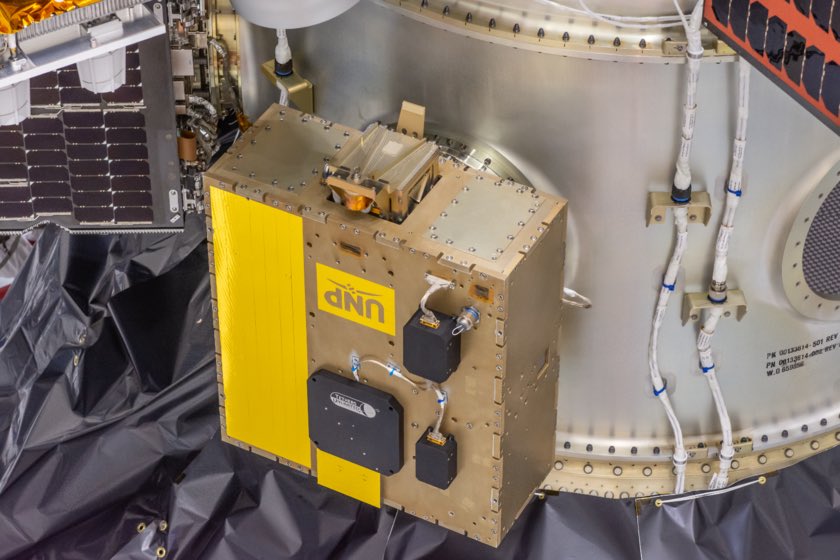Georgia Tech Satellite Successfully Launched Into Space

Prox-1 is seen here installed on the payload stack on the SpaceX Falcon Heavy rocket.
Years of planning, design, and testing have finally paid off for hundreds of Georgia Tech students and young alumni who make up the brain trust behind the latest Tech-built satellite sent to space.
Prox-1 is about the size of a suitcase, weighs 154 pounds, and is extremely delicate. The solar panels that help power the spacecraft cannot be touched by bare human hands. Any sensor or microcomputer moved out of its proper positioning can prevent the satellite from operating.
Tech’s Prox-1 was part of the payload aboard the third launch of the SpaceX Falcon Heavy — the world’s most powerful operational rocket. Its mission is to deploy LightSail-a solar sailing satellite developed by the Planetary Society.
Grayson Huggins just completed his bachelor’s degree in aerospace engineering at Georgia Tech. He was part of the student team that built and tested Prox-1 ahead of the Falcon Heavy launch.
“It is really one of my proudest achievements in my life, and it’s something nobody can ever take away from me,” said Huggins, who is currently interning at NASA’s Jet Propulsion Laboratory. “Something I built will be in space, and that’s amazing to be able to say at 22 years old.”
Prox-1 was scheduled to be deployed approximately 80 minutes after takeoff on the evening of Monday, June 24, but was delayed by a few hours.
The satellite will now spend its first week circling Earth quietly, allowing time for the other spacecraft launched into the same orbit to drift away, so that each can be identified individually. Many eyes will be on Prox-1 because it is carrying LightSail.
Once deployed from Prox-1, LightSail will unfurl a solar sail about the size of a boxing ring and will attempt to become the first spacecraft to be propelled using only sunlight.
LightSail is part of a 10-year project sponsored by the Planetary Society, the independent space interest group headed up by engineer and television personality Bill Nye.
Before the launch, Georgia Tech aerospace alumna and a former mission manager for Prox-1, Teresa Spinelli, met up with Nye at NASA’s Kennedy Space Center.
“As a college student, I was so excited to work on something real that would go to space. It felt like everything I had dreamed of was coming true,” Spinelli says. “While I wish Prox-1 would have been able to launch while I was a student, I’m so excited to see it finally get a chance to fly.”
Georgia Tech aerospace engineering professor Glenn Lightsey and former Georgia Tech professor Dave Spencer served as advisors to the more than 200 students who played a role in the Prox-1 project, which has been supported by the Air Force Office of Scientific Research.
Prox-1 is not the only successful satellite mission that started at Georgia Tech. Two cubesats from the RANGE project, (Ranging and Nanosatellite Guidance Experiment) were successfully launched into orbit in December 2018 on board the SpaceX Falcon-9. Many Georgia Tech aerospace students played critical roles in that mission as well.